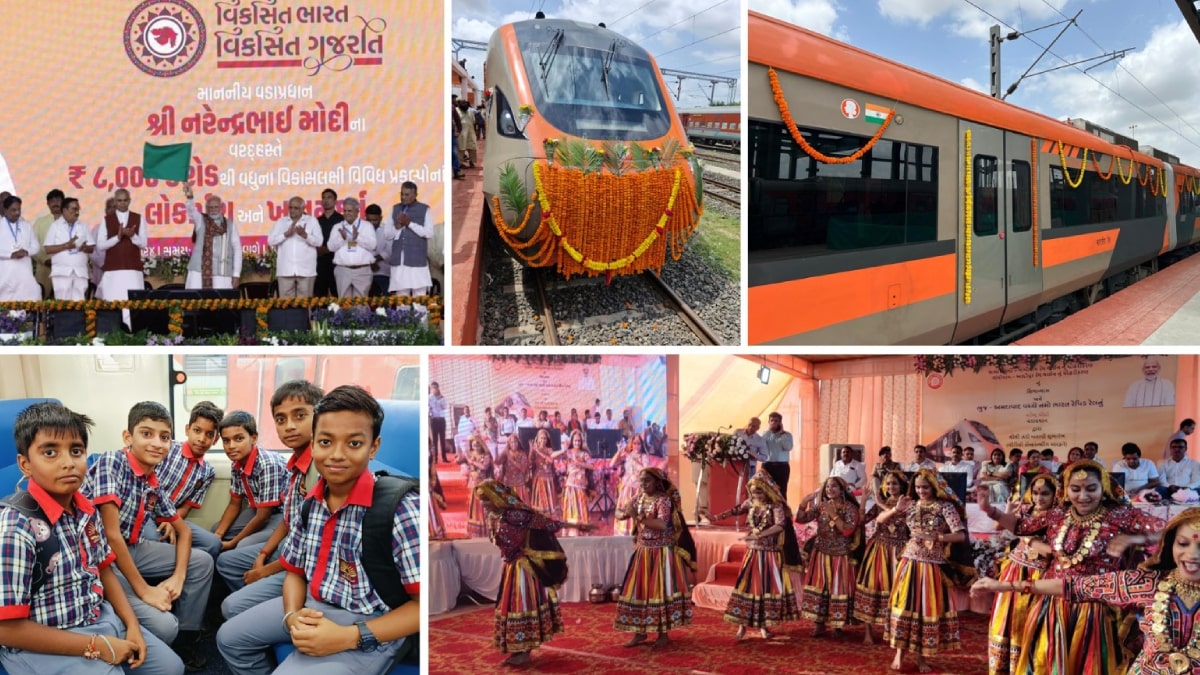India's First Vande Metro: Key Features, Routes, and Ticket Fare Information

The Namo Bharat Rapid Rail, also known as the Vande Metro, is poised to usher in a transportation revolution in India. This innovative service aims to connect major cities and nearby towns efficiently, enhancing the inter-city travel experience for millions of passengers. Launched by Prime Minister Narendra Modi on September 16, 2024, this train service marks a significant milestone in India's railway history. Let's delve into the key features, fares, routes, and schedules of this remarkable addition to the Indian Railways network.
Introduction of Namo Bharat Rapid Rail
The Namo Bharat Rapid Rail is designed to operate over distances ranging from 100 to 250 kilometers, making it an ideal choice for commuters looking for a quick and comfortable travel option. With its modern amenities and high-speed capabilities, it promises to transform how people travel between cities in India. The first operational route connects Bhuj and Ahmedabad, covering approximately 360 kilometers in just under six hours.
Key Features of Vande Metro
The Vande Metro boasts several features that set it apart from traditional passenger trains:
- High-Speed Travel: With a maximum speed of 130 km/h, the Namo Bharat Rapid Rail can significantly reduce travel time compared to conventional trains. It aims to maintain an average speed of around 110 km/h on its routes.
- Modern Amenities: Passengers can enjoy fully air-conditioned coaches with ergonomic seating, panoramic windows, and modular interiors designed for comfort.
- Safety Features: Equipped with advanced safety systems like KAVACH for collision avoidance, CCTV surveillance, and emergency communication units, the Namo Bharat ensures passenger safety throughout the journey.
- Seamless Connectivity: The train features multiple stops along its route, making it accessible for commuters from various regions. The initial route includes stops at key stations such as Anjar, Gandhidham, Bhachau, and Sabarmati.
- Capacity: Each train set can accommodate approximately 1,150 seated passengers, with additional standing room for up to 2,058 passengers, making it suitable for high-demand travel.
Namo Bharat Rapid Rail Fares Info
The fare structure for the Namo Bharat Rapid Rail is designed to be economical compared to traditional bus services:
- The minimum fare for a journey on this service starts at just ₹30, making it an attractive option for budget-conscious travelers.
- For longer journeys, such as from Bhuj to Ahmedabad, the fare is approximately ₹455, which is significantly lower than AC bus services that charge around ₹140.
- Season tickets will also be available at discounted rates for regular commuters.
Namo Bharat Rapid Route, Schedule & Stoppages
The inaugural route of the Namo Bharat Rapid Rail connects Bhuj to Ahmedabad with several key stoppages along the way:
- Departure from Bhuj: Daily at 5:05 AM
- Arrival at Ahmedabad Junction: Approximately at 10:50 AM
- The journey covers a distance of around 360 kilometers, taking about 5 hours and 45 minutes.
Stoppages Include:
1. Anjar
2. Gandhidham
3. Bhachau
4. Samakhiali
5. Halvad
6. Dhrangadhra
7. Viramgam
8. Chandlodiya
9. Sabarmati
This route not only enhances connectivity between Bhuj and Ahmedabad but also integrates various towns along the way into the broader railway network.
The introduction of the Namo Bharat Rapid Rail represents a significant advancement in India's railway infrastructure. With its focus on speed, safety, and passenger comfort, this service is set to redefine inter-city travel in India. As part of the larger vision for modernizing transportation under initiatives like "Make in India," the Vande Metro aims to provide an efficient alternative to road travel while contributing to economic growth and regional connectivity. With ongoing developments in high-speed rail technology and infrastructure improvements by Indian Railways, we can expect more such innovations in the future that will further enhance travel experiences across the country.
Dated September 20, 2024

.png)
